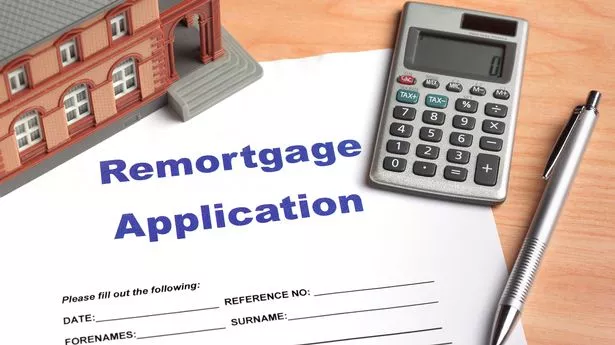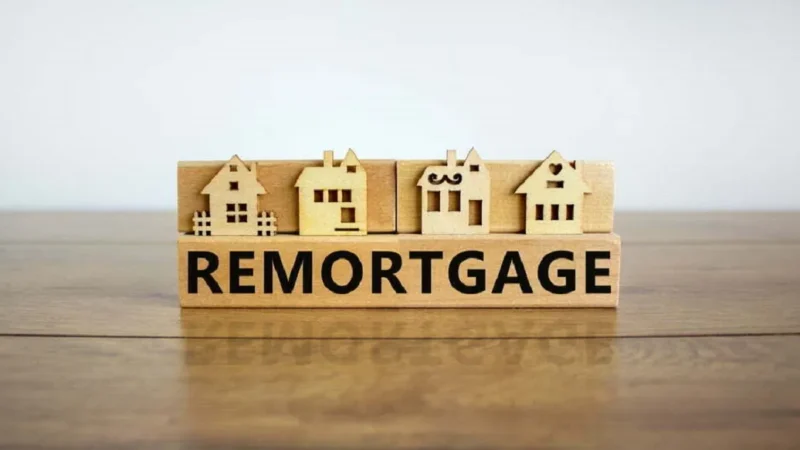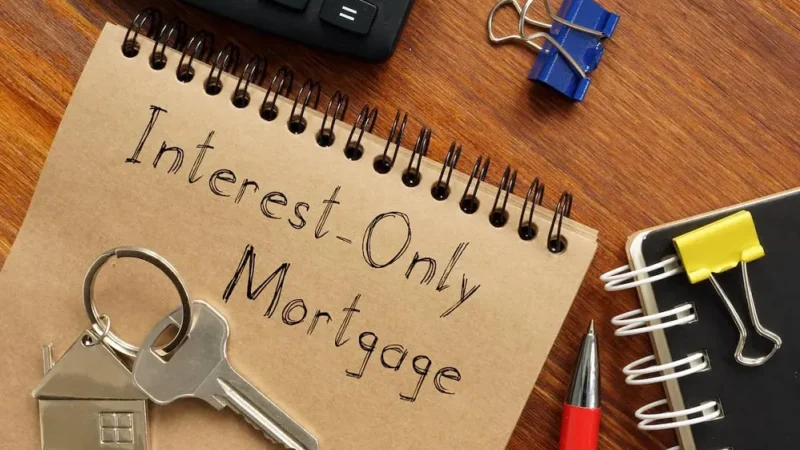What Documents Are Needed For a Remortgage UK

Table of Contents
ToggleWhat documents do you need when Remortgaging
When remortgaging a property in the UK, you’ll need to gather various documents to provide to your mortgage lender or advisor. The specific documents required may vary slightly depending on the lender and your circumstances, but generally, the following documents are commonly requested:
1- Proof of Identity and Address
Proof of identity and address are two of the most essential documents for remortgaging in the UK. Lenders need to be able to verify your identity and address to protect themselves from fraud and to ensure that you are eligible for a remortgage.
There are many different documents that you can use to prove your identity and address. Some of the most common options include:
Proof of identity:
- Passport
- Driving licence
- Birth certificate
- National identity card
- Biometric residence permit
- Biometric residence card
Proof of address:
- Utility bill (e.g. gas, electricity, water, or landline phone)
- Council tax bill
- Bank statement
- Credit card statement
- Mortgage statement
- Building society statement
- Rental agreement
You will typically need to provide one document for proof of identity and one for proof of address. However, some lenders may require you to provide additional documentation, such as a photo ID or a copy of your latest tax return.
It is important to note that all the documents you provide must be in date and legible. You should also ensure that the documents are in your own name and match the address on your remortgage application.
2- Proof of Income
Proof of income is an important document that you will need to provide when remortgaging in the UK. Lenders need to be able to verify your income to assess your affordability and to ensure that you can afford to repay the new mortgage.
There are many different documents that you can use to prove your income. Some of the most common options include:
- Payslips:Your latest payslips are one of the best ways to prove your income. You must typically provide your lender with three to six months’ payslips.
- P60:Your P60 is a tax form showing your total income and tax paid for the previous year. You can obtain a copy of your P60 from your employer.
- Self-assessment tax return:If you are self-employed, you must provide your lender with a copy of your latest self-assessment tax return. This will show your lender your total income and tax paid for the previous year.
In addition to these documents, you may also need to provide your lender with other information about your income, such as your commission structure or any bonuses you receive.
It is important to note that all the documents you provide must be in date and legible. You should also ensure that the documents are in your own name and match the address on your remortgage application.
3- Employment Details
In addition to proof of income, you must provide your lender with your employment details when remortgaging in the UK. This is so the lender can verify your employment status and assess your job security.
The employment details that you will need to provide will vary depending on the lender, but they will typically include:
- Your job title
- Your employer’s name and address
- Your employment start date
- Your employment status (e.g. full-time, part-time, self-employed)
- Your annual salary or income
You may also need to provide your lender with the contact details of your HR department or manager. This is so that the lender can contact your employer to verify your employment status.
If you have recently changed jobs, you may need to provide your lender with additional information, such as your previous employer’s name, address, and date of leaving.
4- Credit History
Credit history records how you have borrowed and repaid money in the past. Lenders use it to assess your creditworthiness, or how likely you are to repay a loan on time.
Your credit history is compiled by credit bureaus, which are companies that collect information about your credit accounts from lenders and other sources. The three major credit bureaus in the United States are Equifax, Experian, and TransUnion.
Your credit history includes information about the following:
- The types of credit accounts you have (e.g., credit cards, loans, mortgages)
- The credit limits on your accounts
- Your payment history
- The amount of debt you owe
- Any bankruptcies or other negative items on your record
Lenders use your credit history to decide whether to approve your loan application and what interest rate to charge you. A good credit history can help you qualify for lower interest rates and better loan terms. A bad credit history can make it difficult to qualify for loans or result in higher interest rates and fees.
You can review your credit report for free once a year from each of the three major credit bureaus at AnnualCreditReport.com. You should review your credit report regularly to ensure the information is accurate and identify any potential problems.
5- Existing Mortgage Details
When remortgaging in the UK, you must provide your lender with details of your existing mortgage. This will help the lender assess your affordability and ensure you can afford to repay the new mortgage.
The existing mortgage details that you will need to provide will vary depending on the lender, but they will typically include:
- The name of your current lender
- Your current mortgage account number
- The current balance on your mortgage
- The interest rate on your mortgage
- The type of mortgage you have (e.g., fixed rate, variable rate, tracker rate)
- The monthly repayment amount on your mortgage
- The date that your current mortgage ends
You may also need to provide your lender with a copy of your latest mortgage statement. This will show the lender the most up-to-date information about your mortgage.
6- Property Information
When remortgaging in the UK, you must inform your lender about your property. This will help the lender assess your property’s value and ensure that it is suitable for a remortgage.
The property information that you will need to provide will vary depending on the lender, but they will typically include:
- The property address
- The type of property (e.g., house, flat, bungalow, maisonette)
- The number of bedrooms and bathrooms
- The property’s square footage
- The property’s current market value
- Any outstanding planning permission or building regulations
You may also need to provide your lender with a copy of your property’s title deeds. This is a legal document that proves that you own the property.
7- Bank Statements
Bank statements are one of the most important documents you must provide when remortgaging in the UK. Lenders use bank statements to verify your income, spending habits, and affordability.
Lenders typically want to see 3-6 months of bank statements from your main current account. They may also want to see statements from any other accounts that you have, such as savings accounts, credit card accounts, or loan accounts.
Lenders will look for the following on your bank statements:
- Regular income: Lenders want to see that you have a regular income sufficient to cover your monthly mortgage repayments.
- Consistent monthly payments: Lenders want to see that you have a good track record of making consistent monthly payments on your existing debts.
- No large outgoings: Lenders don’t want to see any large unexplained outgoings on your bank statements, such as gambling losses or luxury purchases.
- No outstanding debts: Lenders want to see that you have no outstanding debts that could impact your ability to repay the new mortgage.
8- Details of Outgoings
When remortgaging in the UK, you must also provide your lender details of your outgoings. This will help the lender assess your affordability and ensure you can afford to repay the new mortgage.
The outgoings that you will need to provide details of will vary depending on the lender, but they will typically include:
- Monthly mortgage payments
- Rent payments
- Utilities (e.g., gas, electricity, water, council tax)
- Food and household expenses
- Transport costs
- Childcare costs
- Loan repayments
- Credit card repayments
- Other debts and commitments
You may also need to provide your lender with a copy of your budget. This will show the lender how you plan to manage your monthly income and expenses.
9- Proof of Deposit or Equity
Proof of deposit or equity is required for all remortgages in the UK. This is because the lender needs to be sure that you have a financial stake in the property and that you are not borrowing more than the property is worth.
The amount of deposit or equity you need will vary depending on the lender and the remortgage you are applying for. However, most lenders will require you to have a minimum of 10% equity in the property.
There are many ways to provide proof of deposit or equity. One way is to provide your lender with a copy of your bank statement showing your savings account balance. Another way is to provide a copy of your mortgage statement showing the equity you have in the property. If you are selling a property to fund your remortgage, you can provide your lender with a copy of the sale contract.
10- Legal Documents
You will need to sign any legal documents when remortgaging in the UK. These documents are in place to protect both you and the lender.
The main legal documents that you will need to sign include:
- Mortgage deed:This is the main document that creates the mortgage. It will outline the mortgage terms, such as the interest rate, repayment schedule, and other special conditions.
- Transfer deed:If you are changing lenders, you must also sign a transfer deed. This document will transfer the ownership of your mortgage to the new lender.
- Deed of charge:This document is similar to a mortgage deed but is used to secure a loan against other assets, such as a business or investment property.
- Other legal documents:Depending on your circumstances, you may also need to sign documents such as a guarantee or a personal insolvency agreement.
11- Insurance Documents
When remortgaging in the UK, you must provide your lender with proof that you have adequate insurance. This is because the lender needs to protect the property in case of damage or loss.
The type of insurance you need will vary depending on the lender and your property type. However, most lenders will require you to have buildings insurance. Buildings insurance covers repairing or rebuilding your property if it is damaged or destroyed by fire, flood, or other insured events.
You may also need to have contents insurance. Contents insurance covers replacing your belongings if damaged or lost due to fire, flood, theft, or other insured events.
You may also need leasehold insurance if you have a leasehold property. Leasehold insurance covers repairing or rebuilding your leasehold property if it is damaged or destroyed by fire, flood, or other insured events.
In addition to these basic types of insurance, you may also want to consider other types of insurance, such as:
- Mortgage payment protection insurance (MPPI):MPPI can help make your mortgage payments if you cannot work due to illness or injury.
- Life insurance:Life insurance can pay your loved ones financially if you die.
- Critical illness insurance:Critical illness insurance can provide a financial payout if you are diagnosed with a critical illness, such as cancer or a heart attack.
You can obtain insurance from a variety of different providers. It is essential to compare quotes from various providers before you choose an insurance policy.
12- Solicitor's Information
If you are remortgage in the UK, you will need to instruct a solicitor to handle the legal aspects of the remortgage. Your solicitor will be responsible for:
- Reviewing the mortgage offer from your new lender and advising you on the terms and conditions
- Preparing and transferring the necessary legal documentation
- Ensuring that all legal requirements are met
- Liaising with your current lender and your new lender
- Registering the new mortgage with the Land Registry
It is vital to choose a solicitor who has experience in remortgaging. You can ask your friends, family, or colleagues for recommendations or search for a solicitor on the Solicitors Regulation Authority website.
Final Note:
It’s important to check with your specific lender or mortgage advisor to confirm the exact documents they require and any additional documentation that may be necessary based on your circumstances. Additionally, some lenders may have online portals or systems where you can securely upload and submit these documents.






